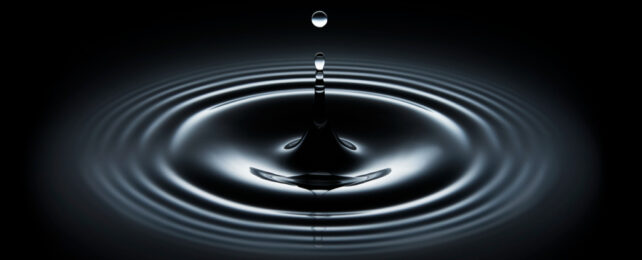
Gravity permeates every part of our world, yanking us down to Earth and stringing together the Solar System, galaxies, and Universe through which our planet glides.
Yet to think gravity, an invisible force, could exhibit the same quantum properties as the most minuscule parts of matter is one of the wildest ideas in physics – and one that is devilishly hard to test.
Now, a team of physicists from the Netherlands and Germany claim they have devised the very experiments that could reveal whether gravity is fundamentally a quantum force, its properties shaped at the smallest possible scales, or a classical one, geometric like Einstein envisaged.
Three of the four fundamental forces of nature can be described by quantum mechanics, but not yet gravity – the weakest of the lot. Working out whether gravity is classical or quantum in nature could help reconcile those apparent differences, and may also help resolve some of the current unsolved mysteries of gravity.
Usually, quantum mechanics is associated with the tiniest parts of our world where we see quantum effects most clearly: between subatomic particles like electrons, packets of light called photons, whole atoms, and even molecules.
Yet theoretically, all objects – from planets to solar systems, whole galaxies, and possibly the entire Universe – could be described by the laws of quantum mechanics, existing as a spectrum of possibility before they're observed.
However, as objects swell in size, amassing gravity, they tend to shed their quantum features and err on the classical side – which is how we've come to know them.
If, however, heavier masses with stronger gravitational fields could behave as a quantum particle, existing in several states at once and becoming entangled, then it would be insanely difficult to detect. That's because quantum entanglement, which has until now been the go-to test for 'quantumness', is incredibly fragile and collapses with the slightest disturbance even on subatomic levels.
"The extreme weakness of the gravitational interaction, compared to all of the other forces, has placed us in the bitter situation of not, yet, being able to investigate its ultimate nature," Ludovico Lami, a mathematical physicist at the University of Amsterdam, and colleagues write in their paper.
In previous experiments looking for quantum entanglement between masses and their gravitational fields, the heaviest object that physicists have observed slipping into an entangled state is more than a quintillion times lighter than the smallest mass for which a gravitational field has been detected. This is still far too small to generate an "appreciable gravitational field", the scientists say.
To get around this impasse, Lami and colleagues have instead proposed a series of experiments that could reveal the 'quantumness' of gravity without generating or needing to detect any entanglement.
The experiments would involve two torsion pendulums, similar to the one that English scientist Henry Cavendish used to first measure the strength of gravity in 1797, along with some shields, mirrors, and lasers.
These experiments remain entirely theoretical for now, but that didn't stop Lami and colleagues from calculating the upper bounds on certain experimental signals for quantumness that gravity, if it is classical, should not be able to overcome.
"We have carefully analyzed the experimental requirements needed to implement our proposal in actual experiments," Lami explains, "and find that even though some degree of technological progress is still needed, such experiments could really be within reach soon."
However, the researchers made some assumptions in their calculations that are hotly debated. There are also further suggestions for other tabletop experiments that could detect quantum gravity.
The study was published in Physical Review X.





No comments
Note: Only a member of this blog may post a comment.